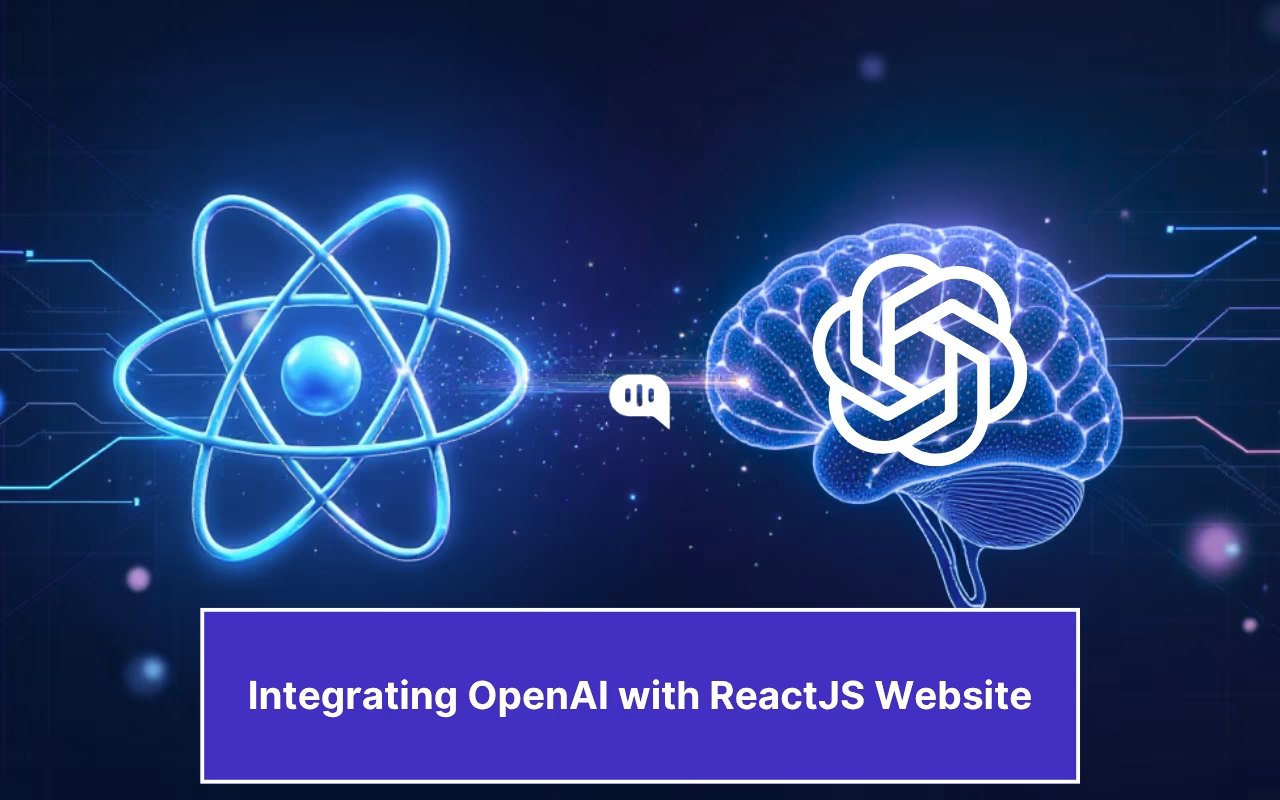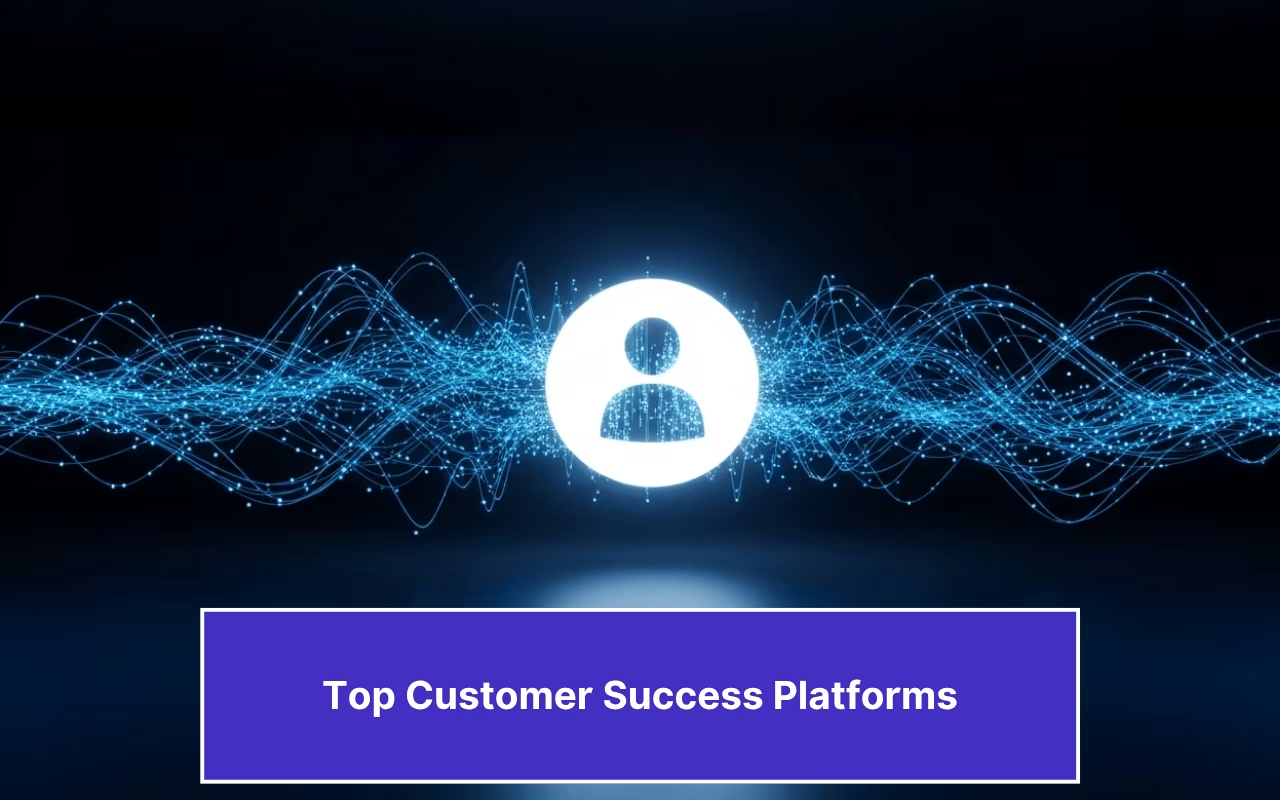Updated on January 13, 2025
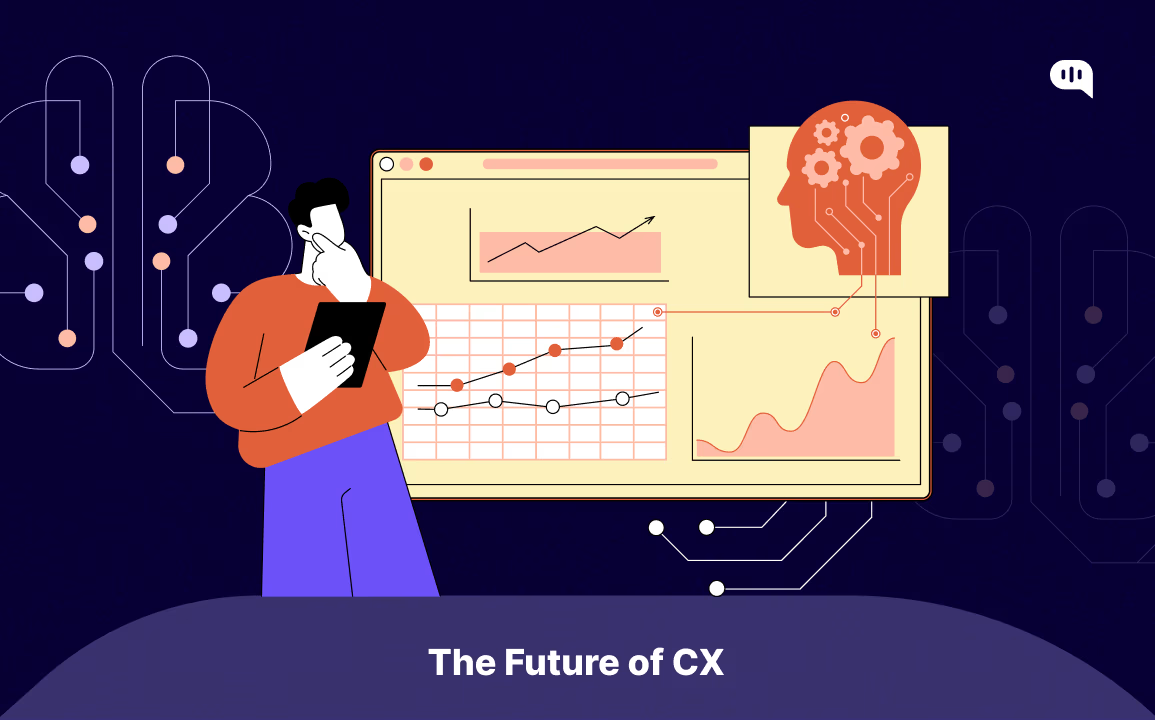
We’ve previously talked about how customer experience and engagement methods are changing. CX leaders must adapt to changing customer behavior (increased self-service usage, reliance on social media platforms like Instagram, etc.)
So, how are they doing it? A lot of CX leaders we talk with regularly are prioritizing learning, EQ, and deeper analytics for their future goals. In this article, we’ll talk about how advanced CX leaders prepare themselves for the future.
We’re going to cover:
1. Adding AI to the Customer Journey
3. Tackling Deeper Problems in the Product or Service
4. Changing the Hiring Paradigm
5. Creating Vector Embeddings for All Data
6. Focusing on the Changing Career Growth Opportunities
Key Strategies for Future-Ready CX Leadership
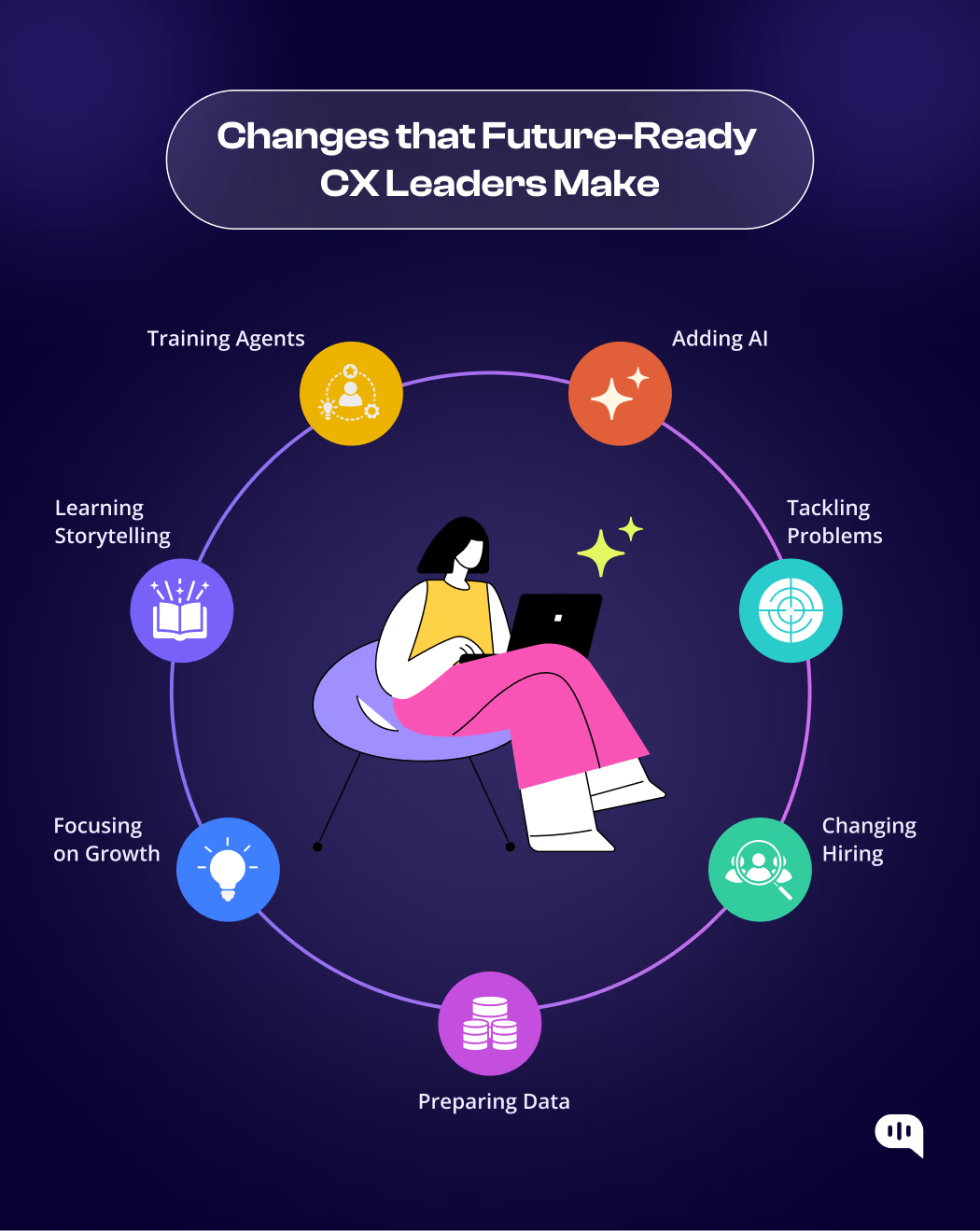
1. Adding AI to the Customer Journey
AI technology has rapidly evolved over the past few years, making it a desirable option for customer experience leaders. Unsurprisingly, most CX leaders want to add AI to their customer journeys.
In our experience across multiple industries, most CX leaders are trying to implement AI-based self-service workflows through generative AI chatbots. This enables them to:
- Serve Customers 24/7/365 – Unlike humans, AI chatbots are available round-the-clock and don’t need to take breaks.
- Provide Consistent Service – AI chatbots are trained to provide accurate and consistent answers, helping CX leaders preserve their brand value.
- Reduce Repetitive Work – AI chatbots can answer up to 60-80% of a business’s repetitive queries and reduce the workload on the CX leaders and their teams.
- Provide Personalized Service – AI can incorporate customer data into its replies and create better and more personalized solutions for them.
Robotic process automation (RPA) through generative AI chatbots has proven fruitful across multiple industries globally, including FinTech, Telecom, and Education. These results have spurred CX leaders worldwide into action, and they’re working hard to incorporate AI into their customer journeys over the next financial year.
Of course, this naturally means that they would need to invest in employee training.

2. Re-Training the Agents
When adopting a new technology across your operations, you must re-train your agents for better performance. There are multiple methodologies that CX leaders are adopting to make these trainings fruitful and successful.
Some common themes we’ve noticed are:
- Training for Data Awareness – Many AI operations depend on knowledge management, and this can only be achieved if the employees are data-aware. Many CX leaders are training their teams to be more aware of data and the operational changes that increase data efficiency.
- Training for Tool Use – Most AI operations will be tool-dependent. If you adopt a tool like Kommunicate across your customer experience team, the vendor will provide you with up-to-date documentation and training.
Most CX leaders are adopting this type of training alongside the broader data science training strategies.
While individual training strategies differ, most leaders will invest more in training their human agents. Additionally, having less burdened employees by repetitive tasks allows innovation and product problems to be solved.
3. Tackling Deeper Problems with the Product or Service
Technological advancements always open up new avenues for innovation. These innovations have come in many forms for AI-based services, including product onboarding and experiential marketing.
Taking cues from these innovations, many CX leaders look deeper into the processes integrated into their products and services. Just like product managers, they can now focus on the revenue and retention rates of the product from a new perspective.
Since most of the repetitive work will be automated, agents and CX leaders can work together to innovate and solve bottlenecks in the customer experience. They can also spend more time developing deeper insights into the customers and solving their problems proactively.
However, since agents now have more capabilities to work within the product and service and will take on more responsibility, hiring decisions will have to change.
4. Changing the Hiring Paradigm
Since CX and Customer Service functions are seen as the cost centers for a company, the hiring processes should be addressed before.
CX leaders have been aware of this problem, and with AI in their arsenal, they’re marching towards a change. This means:
- More Diverse Hiring Within the Function – Siloed functions need to be more favorable for most CX leaders. Hence, there’s a concerted effort to bring in employees who have experience with engineering, science, and research so that they can innovate within the team.
- Permanent Employees – Employee experience is an oft-ignored task. However, with most repetitive tasks removed, CX leaders are looking to focus on employee experience and retaining agents for more extended periods. This, in conjunction with the extra training, requires that more employees stay in the company long-term.
- Cross-Functional Development Programs – CX leaders are implementing structured career development paths that allow customer service employees to rotate through different departments (like Product, Marketing, or Sales) for short periods. Investing in employee growth helps attract higher-caliber candidates who see CX as a strategic career step rather than just an entry-level position.
As these hiring changes come into the foray, systems must also be prepared for new technologies. This is where creating embedded data will become necessary.
5. Creating Vector Embeddings for Data
Vector Embeddings are a specific way to represent data that helps CX leaders implement semantic search and train AI. CX leaders are looking to take more ownership of the process in which this happens.
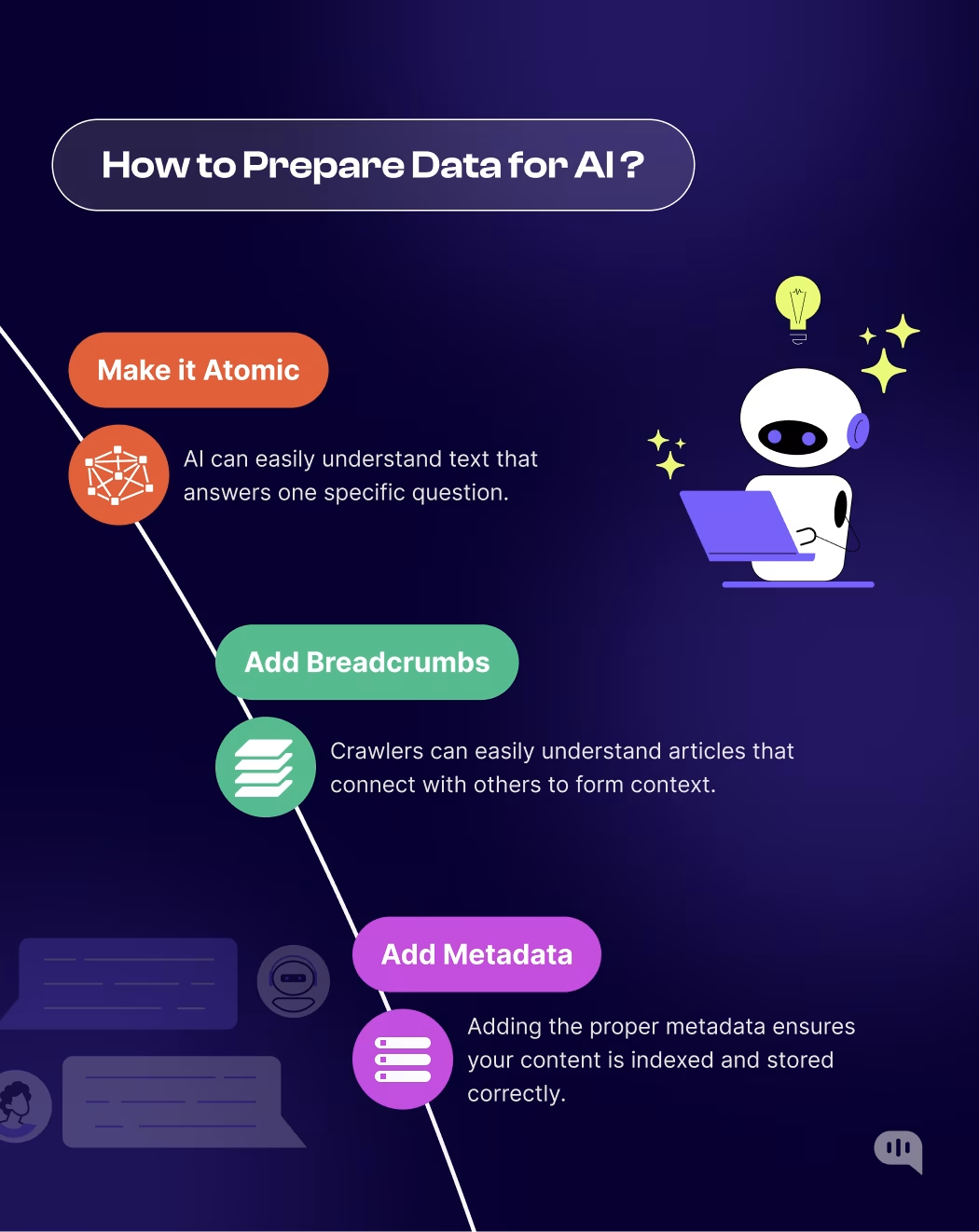
Practically, this means that they’re modifying knowledge bases and documentation to be:
- Atomic – AI can easily understand text that answers one specific question.
- Linked to Next Article – Crawlers can easily understand articles that connect with others to form context.
- Tagged – Adding the proper metadata ensures your content is indexed and stored correctly.
Following these steps helps CX leaders create documentation for AI and humans. This, in turn, means that their AI chatbot can answer more customer questions.
CX leaders who take ownership of data are also looking at the changing career opportunities in the future.
6. Focus on Changing Career Growth Opportunities
Carolyn Truelove, the VP of Reservations and Service Recovery at American Airlines says, “One of the biggest challenges with AI is implementing it without thinking about your business and the customers on the other end. It’s critical to leverage customer-facing AI as a tool to learn from the best of your human agents.”
AI will change CX at its core. However, empowering the best human agents to contribute to AI development is also necessary. CX leaders are doing this by focusing on the changing career growth tracks in this context.
Most CX leaders are implementing the following strategies in place:
- Creating New Career Ladders – CX leaders train their employees as AI-adjacent agents. These agents can solve critical AI systems problems and create and train these models on new data to improve overall CX.
- Growth Plans for Top Performers – Customized career growth plans have been vogue for several leaders. They’re focusing on fostering employees to take on more responsibility within the new paradigm and providing them with more autonomy around product improvements and customer journeys.
- EQ-based Training – One distinguishing factor between humans and AI is emotional intelligence. Empathy and customer obsession will become critical, and agents must be trained in these aspects.
Career growth will be crucial to retaining CX employees and enriching the customer experience. On the other hand, CX leaders are also looking for support from the entire leadership team by learning data storytelling.
7. Data Storytelling
Finally, most CX leaders are also looking to learn more about storytelling. This investment is geared towards changing how the executive teams view CX and creating better customer experiences.
Most CX leaders are working towards creating robust data around customer journeys and leveraging that to improve overall customer experience. They are looking at understanding AI advocacy and how data shapes the world.
Data storytelling creates connections between different kinds of data. This is analogous to the CX discipline, which tries to make connections with the customers. Hence, CX leaders will upskill themselves with data storytelling to become customer advocates.

Conclusion
Most CX leaders are working towards incorporating AI models into their business. This is because of the advanced personalization and automation processes that AI provides. However, this technological change will also change the discipline of the customer experience itself.
CX leaders are working towards adapting to these changes. They’re becoming more data-forward, retooling the agent experience and focusing on data storytelling. These changes will change every industry, and data-first CX leaders are already implementing them for their businesses.
Ready to transform your customer experience with cutting-edge strategies? Book a demo today to see how our solutions can help you implement AI, enhance agent performance, and drive deeper customer insights for the future of CX.
As the Head of Growth, Marketing & Sales, Yogesh is a dynamic and results-driven leader with over 10+ years of experience in strategic marketing, sales, and business development.


